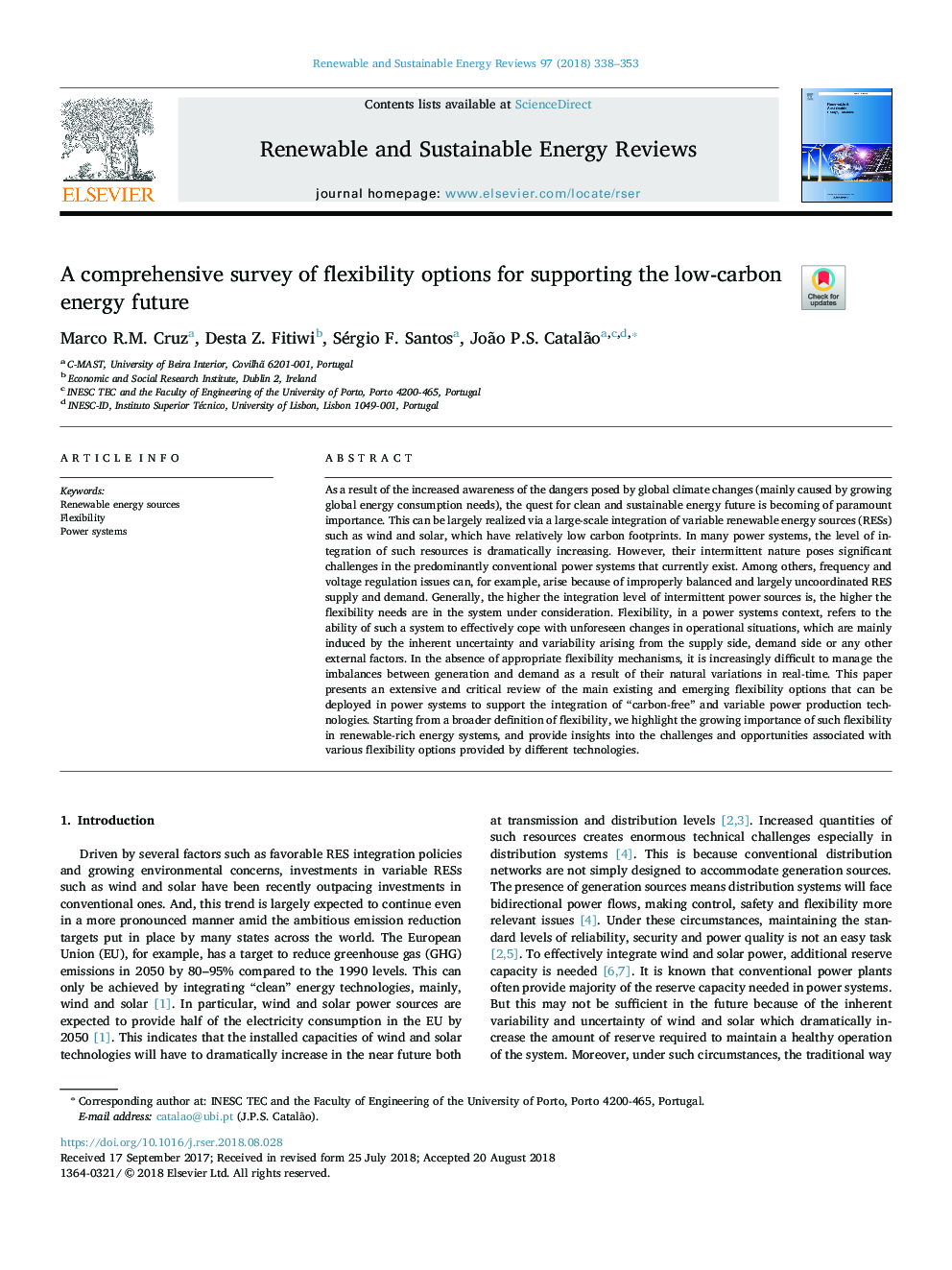| Article ID | Journal | Published Year | Pages | File Type |
|---|---|---|---|---|
| 10136474 | Renewable and Sustainable Energy Reviews | 2018 | 16 Pages |
Abstract
As a result of the increased awareness of the dangers posed by global climate changes (mainly caused by growing global energy consumption needs), the quest for clean and sustainable energy future is becoming of paramount importance. This can be largely realized via a large-scale integration of variable renewable energy sources (RESs) such as wind and solar, which have relatively low carbon footprints. In many power systems, the level of integration of such resources is dramatically increasing. However, their intermittent nature poses significant challenges in the predominantly conventional power systems that currently exist. Among others, frequency and voltage regulation issues can, for example, arise because of improperly balanced and largely uncoordinated RES supply and demand. Generally, the higher the integration level of intermittent power sources is, the higher the flexibility needs are in the system under consideration. Flexibility, in a power systems context, refers to the ability of such a system to effectively cope with unforeseen changes in operational situations, which are mainly induced by the inherent uncertainty and variability arising from the supply side, demand side or any other external factors. In the absence of appropriate flexibility mechanisms, it is increasingly difficult to manage the imbalances between generation and demand as a result of their natural variations in real-time. This paper presents an extensive and critical review of the main existing and emerging flexibility options that can be deployed in power systems to support the integration of “carbon-free” and variable power production technologies. Starting from a broader definition of flexibility, we highlight the growing importance of such flexibility in renewable-rich energy systems, and provide insights into the challenges and opportunities associated with various flexibility options provided by different technologies.
Related Topics
Physical Sciences and Engineering
Energy
Renewable Energy, Sustainability and the Environment
Authors
Marco R.M. Cruz, Desta Z. Fitiwi, Sérgio F. Santos, João P.S. Catalão,
